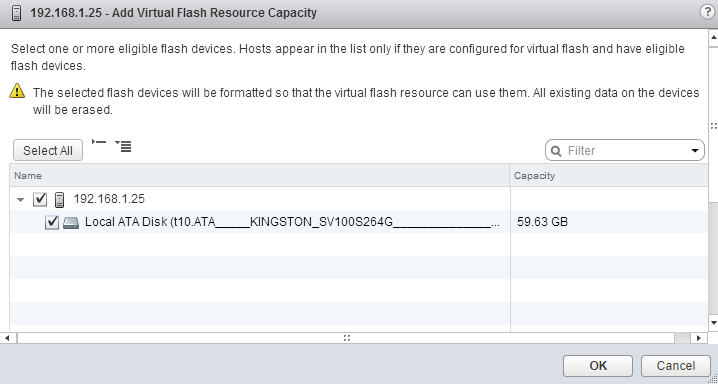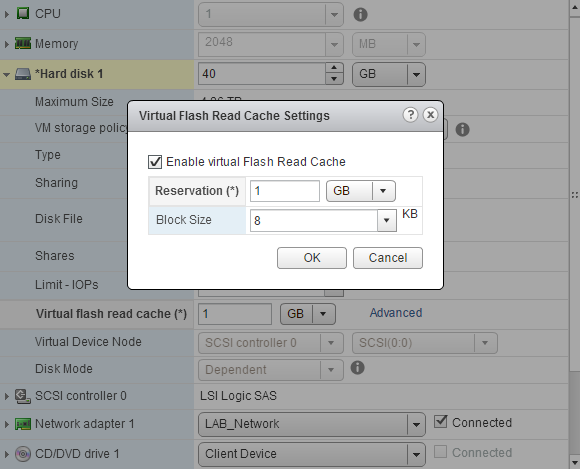Configuring local SSDs for use as a Virtual Flash Resource is done from the ESXi host settings' Virtual Flash Resource Management menu. Adding capacity will display the flash devices that are eligible to be used as Virtual Flash Resources, as shown in the following screenshot:

Flash devices that are selected as Virtual Flash cache are formatted with a Virtual Flash File System (VFFS), and the capacity can only be used for Virtual Flash Resource.
Once flash capacity has been added, the virtual machines are configured to consume the Virtual Flash Resource as vFRC. vFRC is configured per virtual machine disk.
Configuring the flash read cache for a virtual machine is done by using Edit Settings. Select the virtual machine hard disk to configure for Virtual Flash Read Cache, Enable virtual Flash Read Cache, and allocate the amount of cache to reserve and the Block Size for the virtual machine, as shown in the following screenshot:

A portion of Virtual Flash Resource capacity can be reserved for the host swap cache. This cache can be shared by all virtual machines running on the host and provides low-latency caching for virtual machine swap files. Using Virtual Flash Resources for host caching will reduce the performance impact on the virtual machines, should VMkernel swapping occur.
